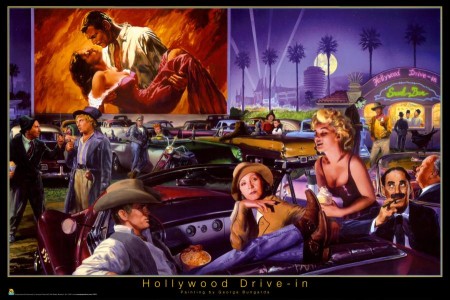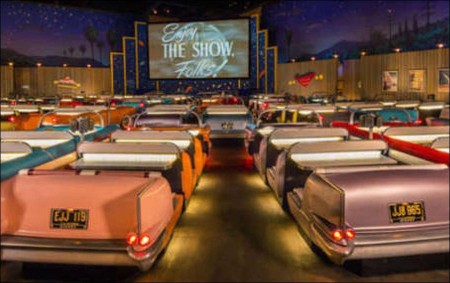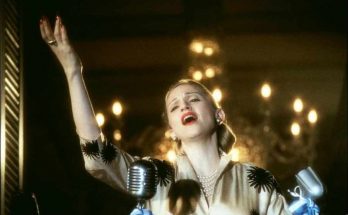While many movie theaters in small American towns closed in the 1950s, an equal number of a new kind of theater, which recognized the supremacy of the automobile in American life, opened up.
In the 1920s concerned parents had been anxious about the effects of automobiles and movies on their children’s morals; their grandchildren could now combine these menaces to their moral welfare at the drive-in.
The first drive-in movie theater opened in 1933, but they mushroomed in the decade after World War II. By 1956 there were 4,200 drive-ins, earning nearly a quarter of total box-office receipts.
They were promoted as “the answer to the family’s night out”; a way for married couples to avoid the expense of baby-sitters, but their real attraction was to the youth market, where teenagers could escape parental supervision.
The drive-in market encouraged a new kind of filmmaking, pioneered by Columbia producer Sam Katzman and American International Pictures (AlP). Discarding conventional formulas such as the Western, they geared their films solely for the teenage market, hooking a story on to any gimmick they could think of.
The success of Rock Around the Clock in 1956, and the cycle of rock ‘n’ roll movies that followed made it clear that “teenpics” could reap huge profits even. If they pointedly excluded an older audience. These mainstream productions spawned imitations, such as Teenage Crime Wave (1955) and Hot Rod Rumble (1957).
The other major “teenpic” genre was the horror film: low-budget “exploitation” movies (so-called because their ‘publicity budgets were higher than their production costs), with titles like I Married a Monster from Outer Space (1958) were pumped out to provide the material for the double and triple-bills at the drive-ins.
Teenagers liked double-bills for the simple reason that they lasted longer – especially when offered on “midnite matinees”. Few of these movies shared classical Hollywood’s concern with tightly constructed narrative.
Instead, their emphasis on spectacle implicitly recognized that the audience might have other things to do than just watch the film. By 1960 the established industry had learnt at least some of the lessons of exploitation producers, and were successfully producing material for the teenage market.
Related Link: Read more Popular Culture articles
Views: 240




